A Spatially Distributed Network for Tracking the Pulsation Signal of Flow Field Based on CFD Simulation: Method and a Case Study
Abstract
:1. Introduction
2. Temporal Spatial States of Pressure Pulsation
3. Pulsation Tracking Network (PTN) Method
3.1. Estimated Distance of Adjacent Monitoring Points
3.2. Layout Scheme of Monitoring Points
3.3. The Process of Signal Propagation
4. Testing Case Details
4.1. Case Description
4.2. Grid Convergence Check
4.3. Experimental-Computational Validation
5. Traditional CFD Post-Processing
5.1. Flow Patterns of Trailing-Edge Vortex Shedding
5.2. Interactions among Vortexes
5.3. Pressure Pulsation on Typical Sites
6. PTN Tracking Results
6.1. Setup of PTN
6.2. Amplitude
6.3. Intensity and Attenuation
6.4. Dominant Frequency Distribution
6.5. Phase and Phase Difference
7. Conclusions and Discussions
- (1)
- CFD simulation with a proper time-frequency conversion algorithm, was shown to be effective in predicting the pulsation of turbulent flow fields. By setting discrete monitoring points on important sites, the dominant frequencies in a pulsation signal could be found. However, the traditional time-domain plot and frequency-domain plot were shown to be insufficient in terms of understanding the detailed influences of different pulsation frequencies. As an effective supplement, the pulsation tracking network (PTN) was helpful in resolving pulsating turbulent flow fields. The total pulsation intensity, dominant frequency, amplitude of frequencies, phase and phase difference could be well understood. The influence range, attenuation law and propagation law could be tracked. PTN was found to be very useful as a breakthrough in CFD post-processing.
- (2)
- In this study with a hydrofoil trailing-edge vortex-shedding flow case, PTN was proven to be effective in detailed analyses. Under the Reynolds number of 2.2 × 106, the dominant frequencies were found to be fvs = 1152 Hz and 2 fvs = 2304 Hz. The highest amplitude regions of fvs were symmetrically distributed because of the two shedding vortex rows. The highest amplitude region of 2 fvs was slightly downstream to the trailing edge. It was caused by the interaction among vortexes. The fvs frequency was dominant in most of the PTN monitored region. However, the fvs intensity continually attenuated along x-direction with an increasingly wider 2 fvs dominant region. The 2 fvs frequency also attenuated along a fluctuating x-direction route. The phase difference contour and curves adequately proved the attenuation. The distances between peaks and valleys continually widened along the x-direction but this rate of increasing became slower over time.
Author Contributions
Funding
Institutional Review Board Statement
Informed Consent Statement
Data Availability Statement
Conflicts of Interest
References
- Mittal, S. Computation of three-dimensional flows past circular cylinder of low aspect ratio. Phys. Fluids 2001, 13, 177–191. [Google Scholar] [CrossRef]
- Voorhees, A.; Dong, P.; Atsavapranee, P.; Benaroya, H.; Wei, T. Beating of a Circular Cylinder Mounted as an Inverted Pendulum. J. Fluid Mech. 2008, 610, 217–247. [Google Scholar] [CrossRef]
- Wei, Z.; Zang, B.; New, T.H.; Cui, Y. A proper orthogonal decomposition study on the unsteady flow behaviour of a hydrofoil with leading-edge tubercles. Ocean Eng. 2016, 121, 356–368. [Google Scholar] [CrossRef]
- Towne, A.; Schmidt, O.T.; Colonius, T. Spectral proper orthogonal decomposition and its relationship to dynamic mode decomposition and resolvent analysis. J. Fluid Mech. 2018, 847, 821–867. [Google Scholar] [CrossRef] [Green Version]
- Hall, K.C.; Thomas, J.P.; Dowell, E.H. Proper Orthogonal Decomposition Technique for Transonic Unsteady Aerodynamic Plows. AIAA J. 2000, 38, 1853–1862. [Google Scholar] [CrossRef]
- Lumley, J.L. The structure of inhomogeneous turbulent flows. In Atmospheric Turbulence and Radio Wave Propagation; Nauka: Moscow, Russia, 1967; pp. 166–178. [Google Scholar]
- Hussain, A.K.M.F. Coherent structures in turbulence. J. Fluid Mech. 1986, 173, 303–356. [Google Scholar] [CrossRef]
- Hutchinson. Stochastic Tools in Turbulence; IOP Publishing Ltd.: Bristol, UK, 2007; Volume 22, p. 161. [Google Scholar]
- Sirovich, L. Turbulence and the Dynamics of Coherent Structures. I-Coherent Structures. II-Symmetries and Transformations. III-Dynamics and Scaling. Q. Appl. Math. 1987, 45, 561–571. [Google Scholar] [CrossRef] [Green Version]
- Jung, D. An Investigation of the Reynolds-Number Dependence of the Axisymmetric Jet Mixing Layer Using a 138 Hot-Wire Probe and the POD. Ph.D. Thesis, State University of New York at Buffalo, Buffalo, NY, USA, 2001. [Google Scholar]
- Berkooz, G.; Holmes, P.; Lumley, J.L. Lumley. The Proper Orthogonal Decomposition in the Analysis of Turbulent Flows. Annu. Rev. Fluid Mech. 1993, 25, 539–575. [Google Scholar] [CrossRef]
- Jo, T.; Koo, B.; Kim, H.; Lee, D.; Yoon, J.Y. Effective sensor placement in a steam reformer using gappy proper orthogonal decomposition. Appl. Therm. Eng. 2019, 154, 419–432. [Google Scholar] [CrossRef]
- Schmid, P.J. Dynamic mode decomposition of numerical and experimental data. J. Fluid Mech. 2010, 656, 5–28. [Google Scholar] [CrossRef] [Green Version]
- Schmid, P.J. Application of the dynamic mode decomposition to experimental data. Exp. Fluids 2011, 50, 1123–1130. [Google Scholar] [CrossRef]
- Kou, J.; Zhang, W. Dynamic mode decomposition and its application in fluid mechanics. Acta Aerodyn. Sin. 2018, 36, 163–179. [Google Scholar]
- Taira, K.; Brunton, S.L.; Dawson, S.T.; Rowley, C.W.; Colonius, T.; McKeon, B.J.; Schmidt, O.T.; Gordeyev, S.; Theofilis, V.; Ukeiley, L.S. Modal Analysis of Fluid Flows: An Overview. AIAA J. 2017, 55, 4013–4041. [Google Scholar] [CrossRef] [Green Version]
- Xue, D.; Pan, C.; Li, G. Measurement of tip vortex instability frequency based on flow visualization. J. Beijing Univ. Aeronaut. Astronaut. 2016, 42, 837–843. [Google Scholar]
- Dörfler, P.; Sick, M.; Coutu, A. Flow-Induced Pulsation and Vibration in Hydroelectric Machinery; Springer: Berlin/Heidelberg, Germany, 2013. [Google Scholar]
- Wylie, E.B.; Streeter, V.L. Fluid Transients; FEB Press: Ann Arbor, MI, USA, 1983. [Google Scholar]
- Chaudhry, M.H. Applied Hydraulic Transients; Van Nostrand Reinhold: New York, NY, USA, 1987. [Google Scholar]
- Shechtman, Y.; Eldar, Y.C.; Cohen, O.; Chapman, H.N.; Miao, J.; Segev, M. Phase retrieval with application to optical imaging. IEEE Signal Process. Mag. 2015, 32, 87–109. [Google Scholar] [CrossRef] [Green Version]
- International Electrotechnical Commission (IEC). Field Acceptance Tests to Determine the Hydraulic Performance of Hydraulic Turbines, Storage Pumps and Pump-Turbines; International Electrotechnical Commission (IEC): Geneva, Switzerland, 1991. [Google Scholar]
- Roth, S.; Calmon, M.; Farhat, M.; Muench, C.; Huebner, B.; Avellan, F. Hydrodynamic damping identification from an impulse response of a vibration blade. In Proceedings of the 3rd IAHR International Meeting of the Workgroup on Cavitation and Dynamic Problems in Hydraulic Machinery and Systems, Brno, Czech Republic, 14–16 October 2009. [Google Scholar]
- Ausoni, P. Turbulent Vortex Shedding from a Blunt Trailing Edge Hydrofoil. Ph.D. Thesis, Swiss Federal Institute of Technology Lausanne, Lausanne, Switzerland, 2009. [Google Scholar]
- Menter, F.R.; Kuntz, M.; Langtry, R. Ten years of industrial experience with the SST turbulence model. Turbul. Heat Mass Transf. 2003, 4, 625–632. [Google Scholar]
- Hellsten, A.; Laine, S. Extension of the k-ω-SST turbulence model for flows over rough surfaces. In Proceedings of the 22nd Atmospheric Flight Mechanics Conference, New Orleans, LA, USA, 11–13 August 1997. [Google Scholar]
- Huang, X.; Yang, W.; Li, Y.; Qiu, B.; Guo, Q.; Liu, Z. Review on the sensitization of turbulence models to rotation/curvature and the application to rotating machinery. Appl. Math. Comput. 2019, 341, 46–69. [Google Scholar] [CrossRef]
- Celik, I.B.; Ghia, U.; Roache, P.J.; Freitas, C.J. Procedure for estimation and reporting of uncertainty due to discretization in CFD applications. J. Fluids Eng. 2008, 130, 0780017. [Google Scholar]
- Zeng, Y.; Yao, Z.; Gao, J.; Hong, Y.; Wang, F.; Zhang, F. Numerical Investigation of Added Mass and Hydrodynamic Damping on a Blunt Trailing Edge Hydrofoil. J. Fluids Eng. 2019, 141, 0811088. [Google Scholar] [CrossRef]
- Vu, T.C.; Nennemann, B.; Ausoni, P.; Farhat, M.; Avellan, F. Unsteady CFD Prediction of Von Karman Vortex Shedding in Hydraulic Turbine Stay Vanes; Hydro: Granada, Spain, 2007. [Google Scholar]
- Kock, F.; Herwig, H. Local entropy production in turbulent shear flows: A high-Reynolds number model with wall functions. Int. J. Heat Mass Transf. 2004, 47, 2205–2215. [Google Scholar] [CrossRef]
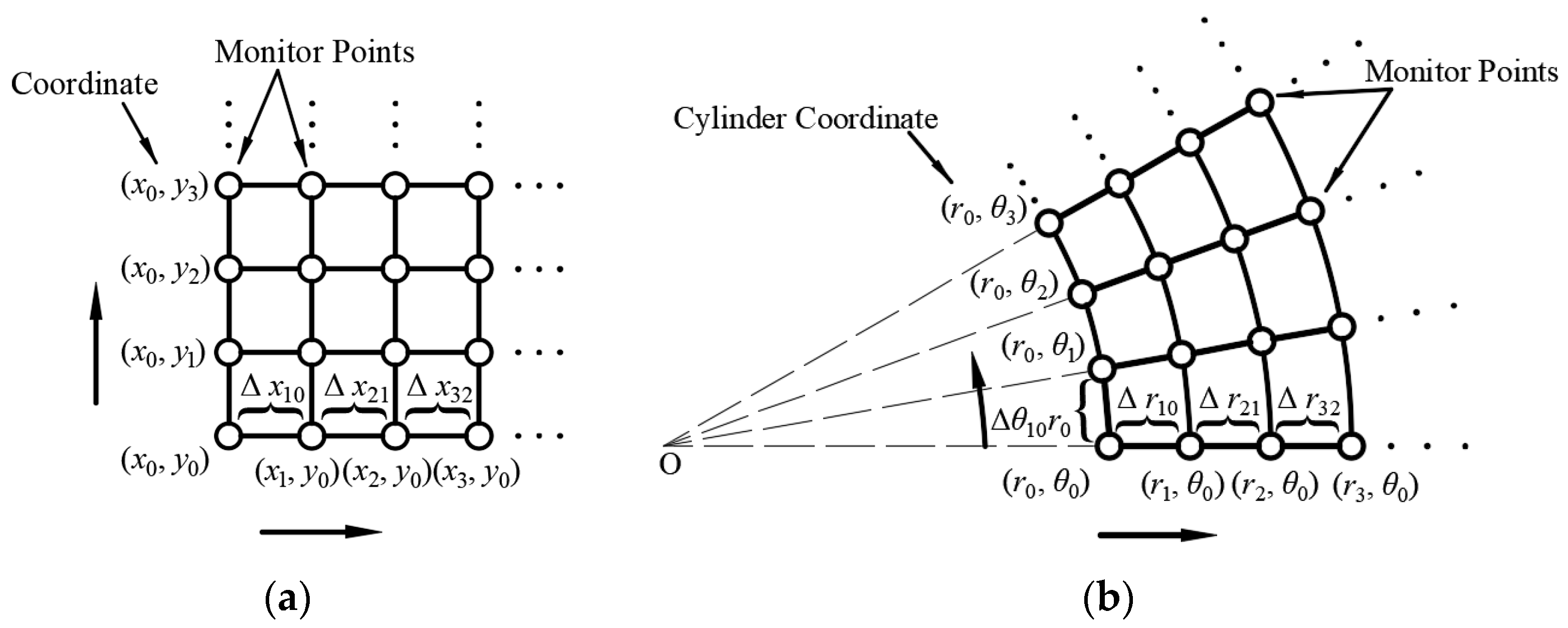

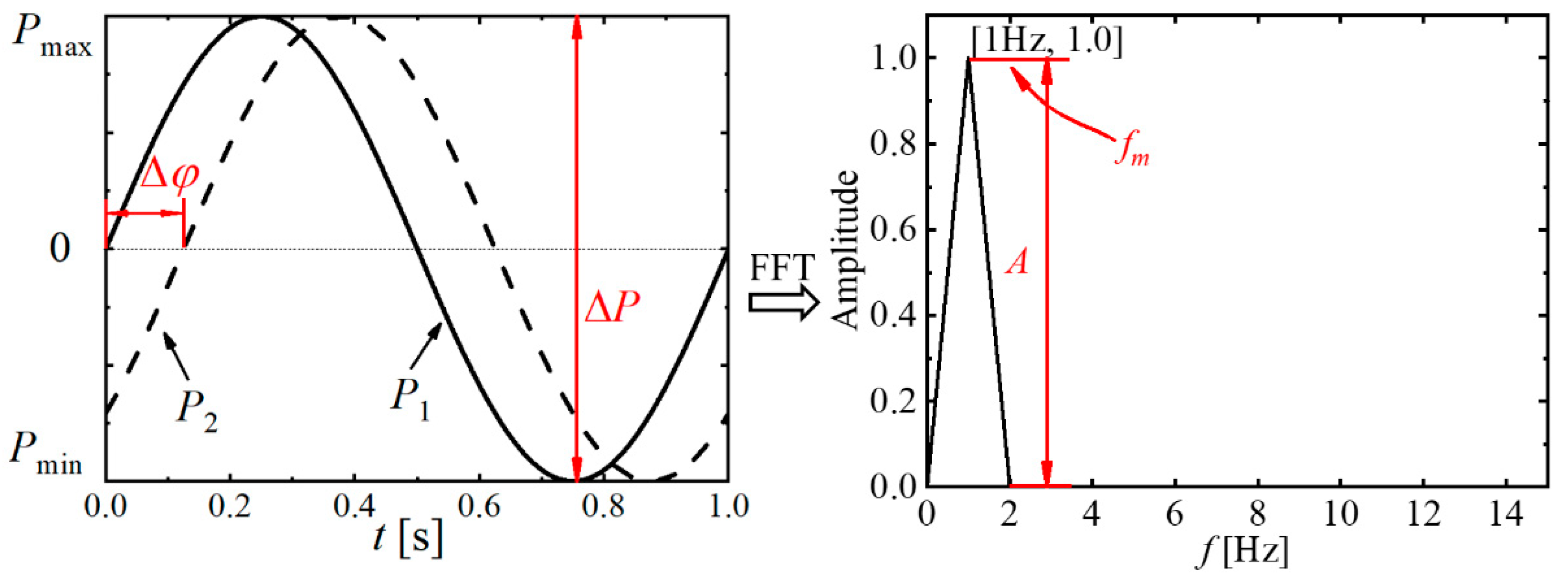
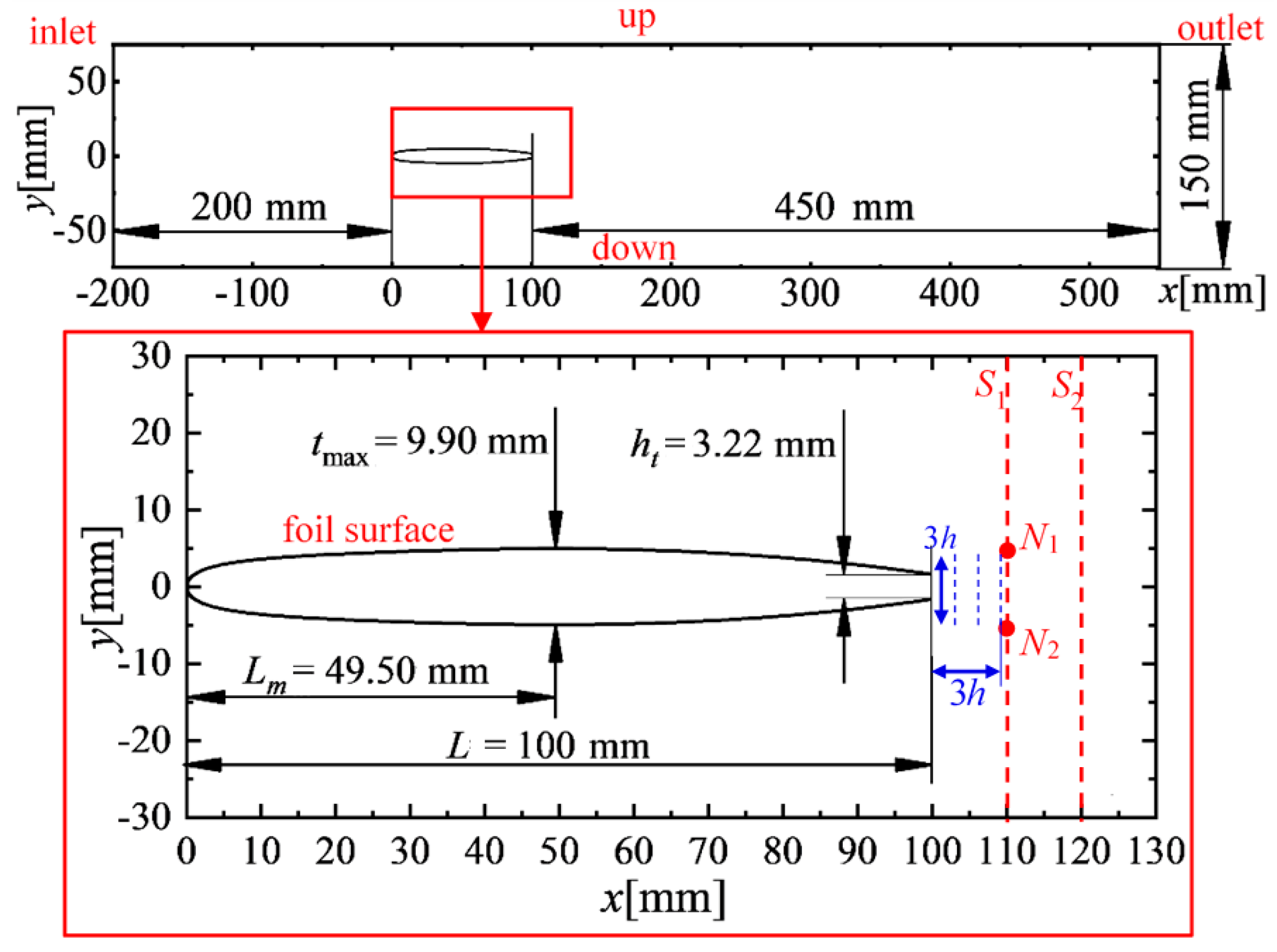

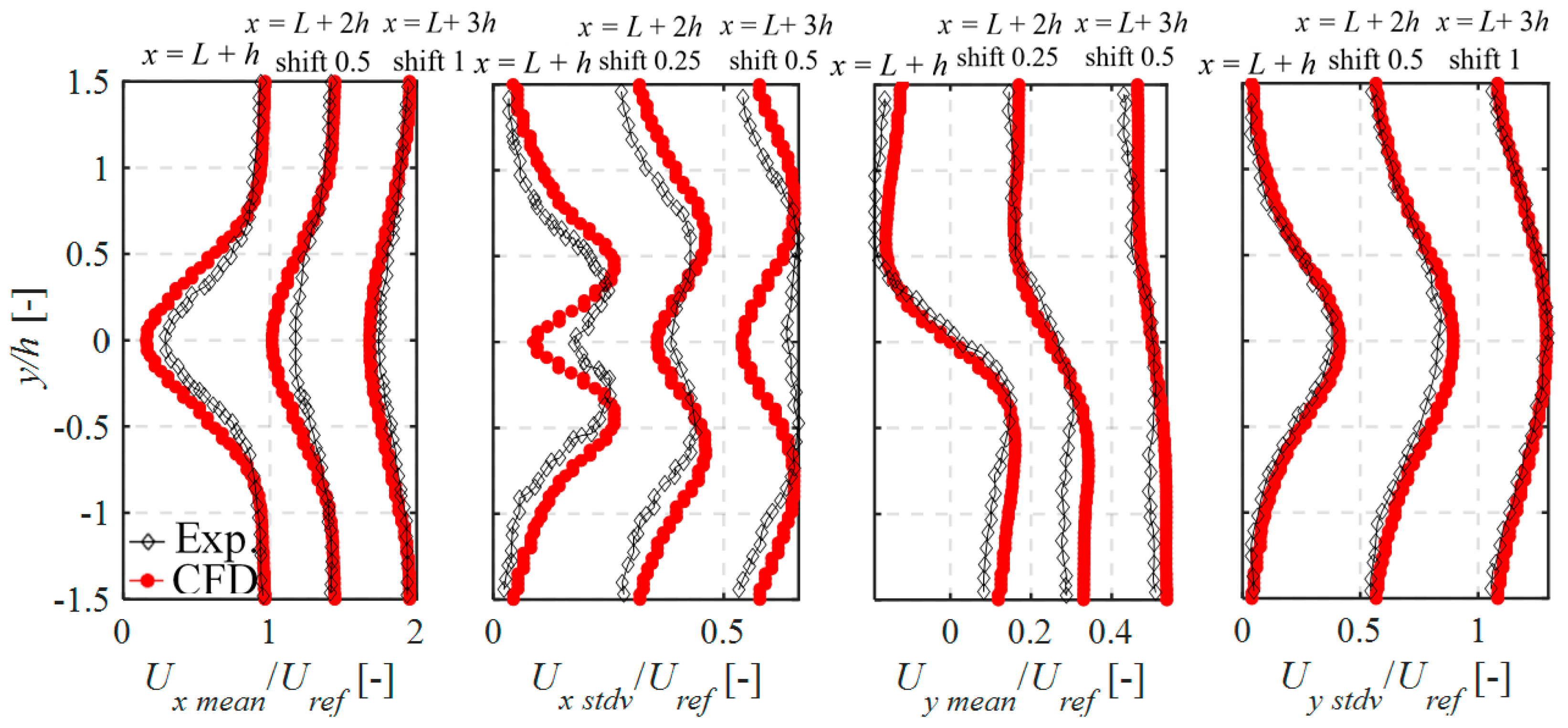
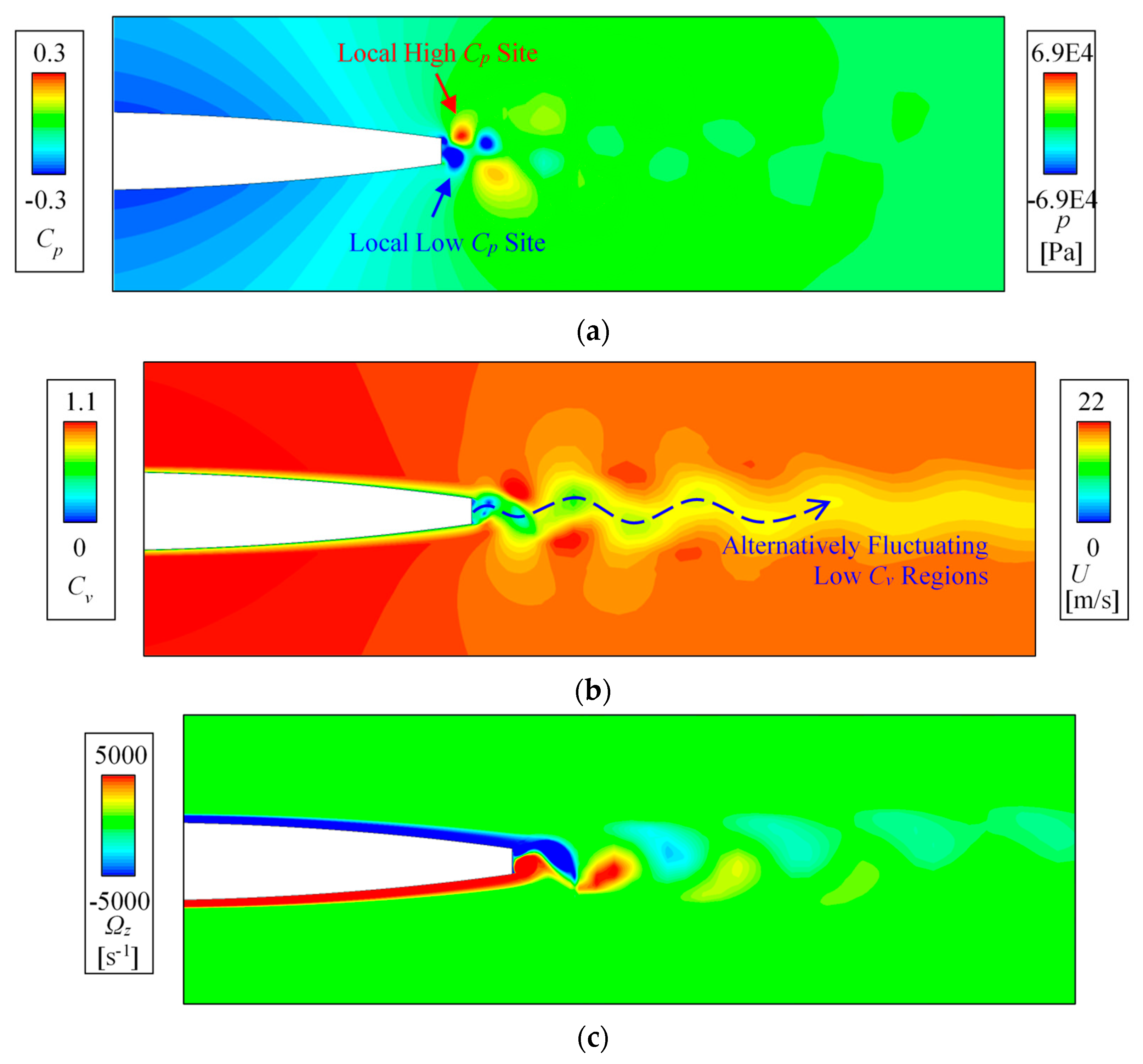
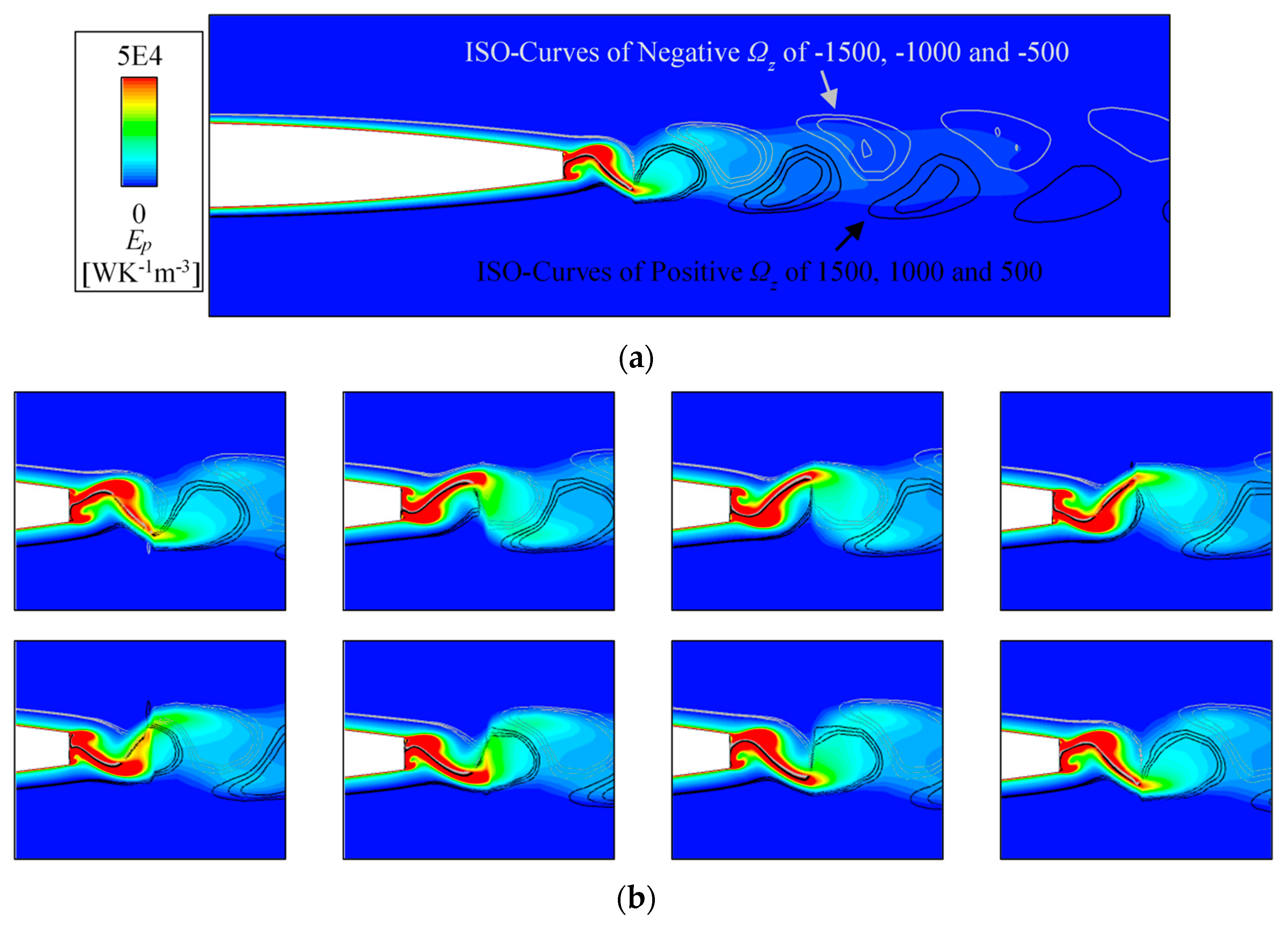


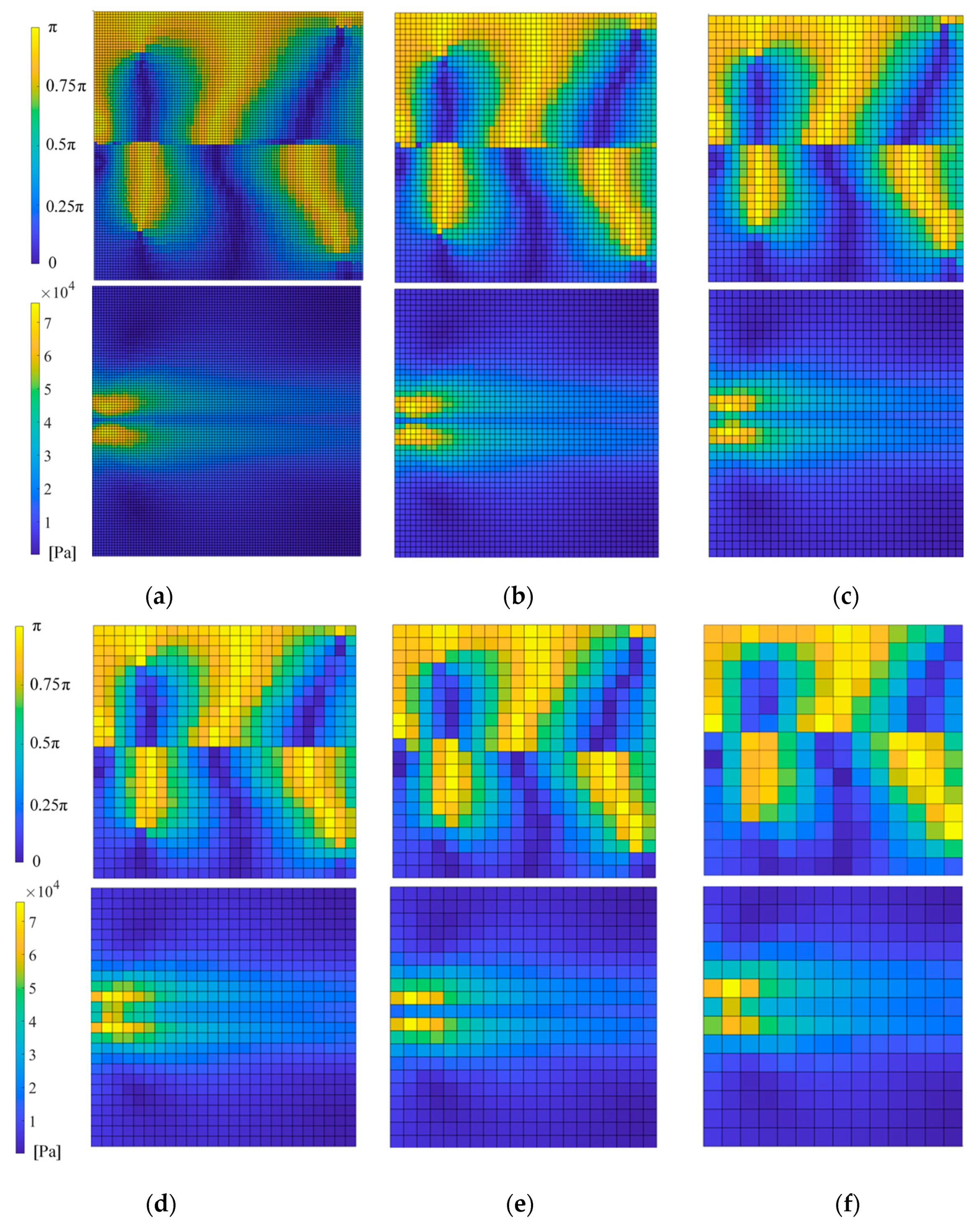
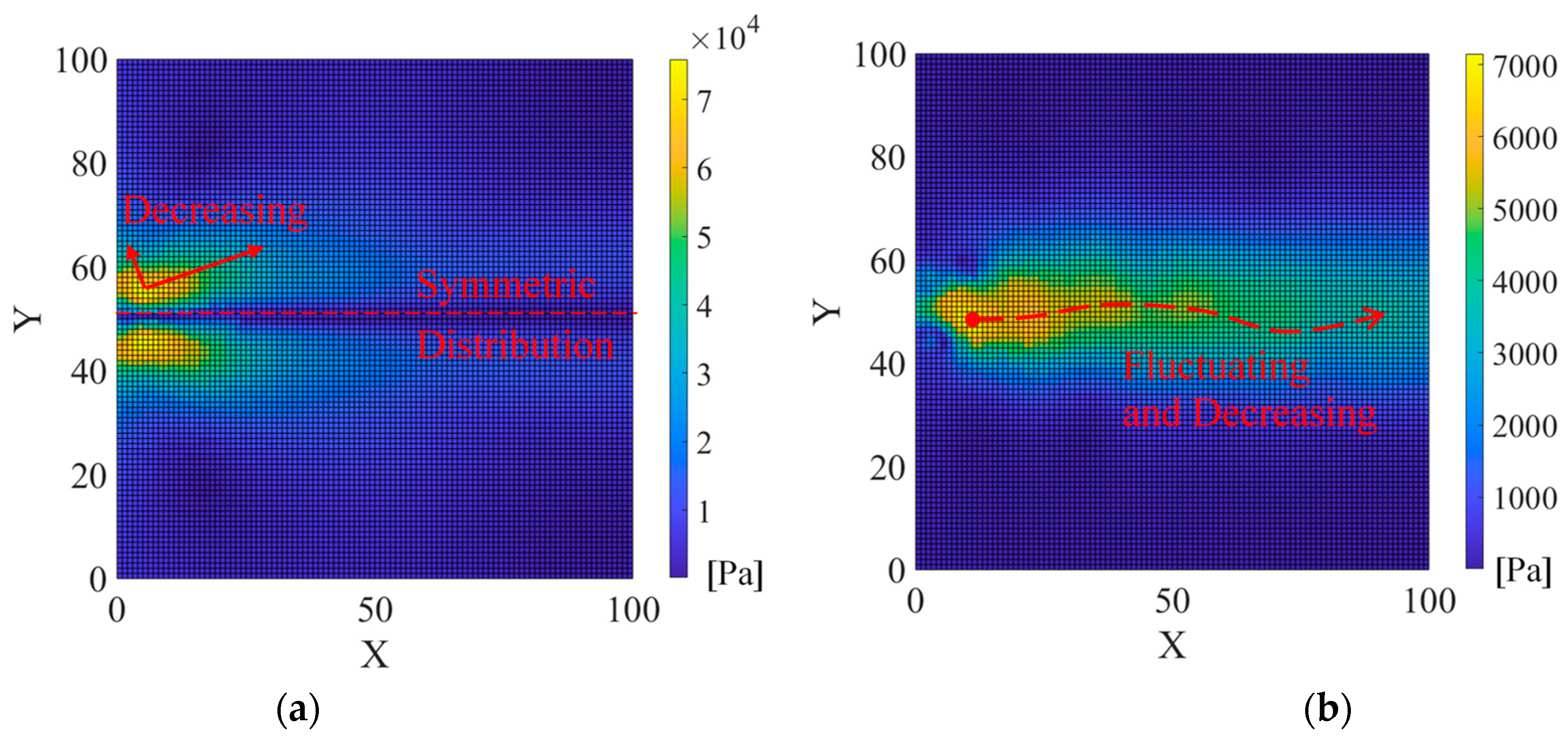
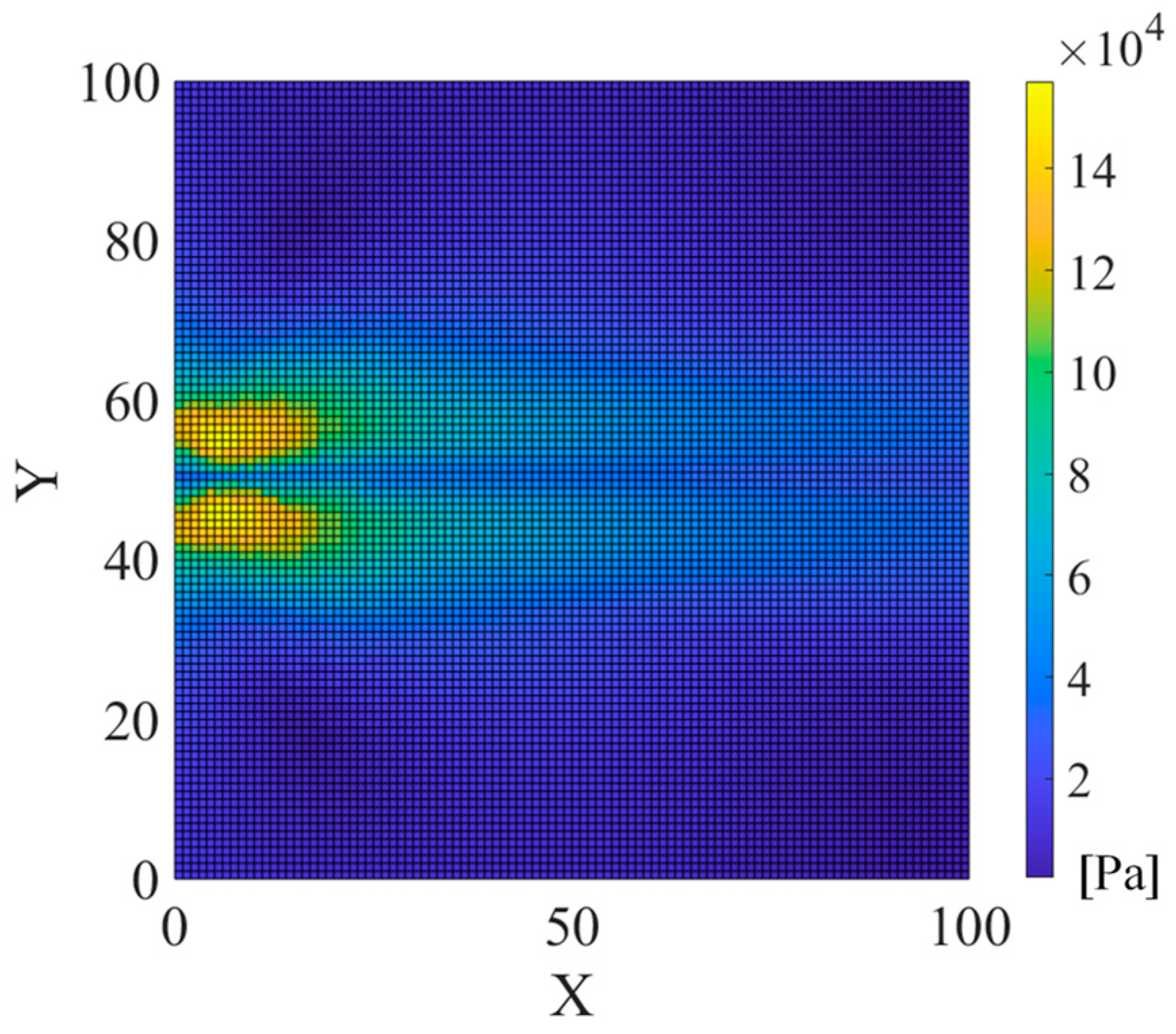
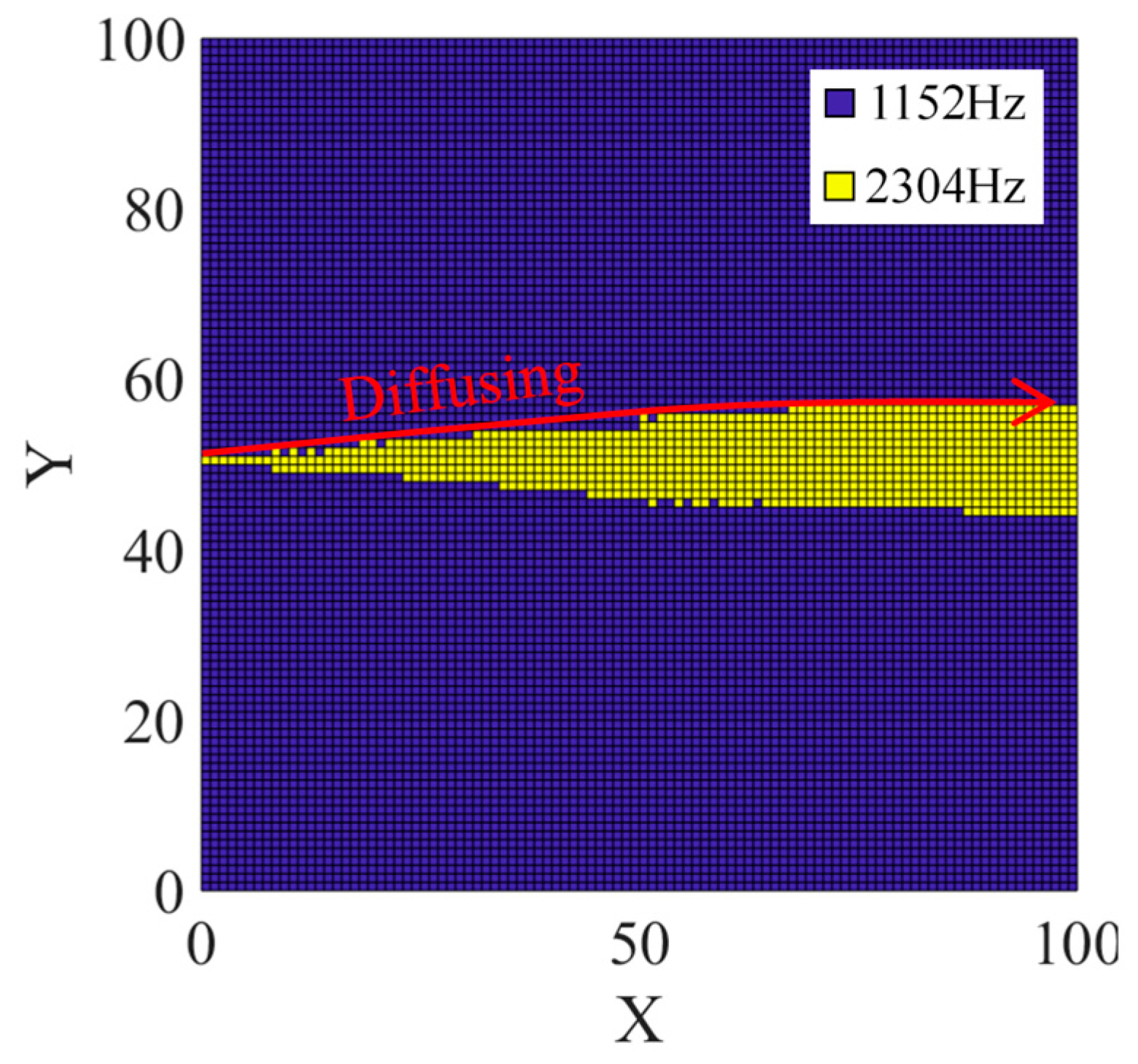
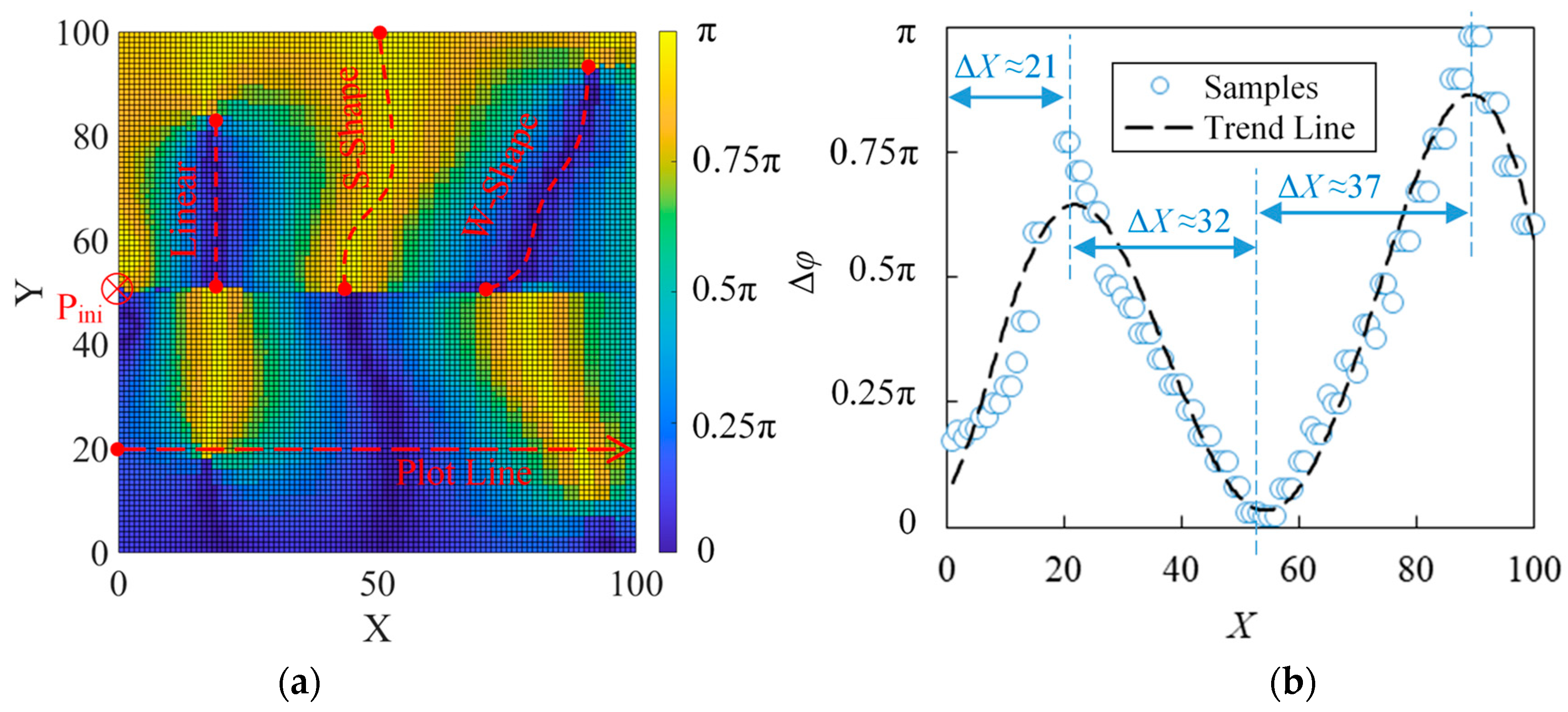
| No. | Position | Type | Description |
|---|---|---|---|
| 1 | Inlet | Velocity inlet boundary | vin = 20 m/s |
| 2 | Outlet | Pressure outlet boundary | pout = 1 atm |
| 3 | Foil Surface | Wall | No slip wall |
| 4 | Up and Down Walls | Wall | No slip wall |
| 5 | Two Sides | Symmetry | Simplified for 2D |
| PN1 (kPa) | PN2 (kPa) | PS1 (kPa) | PS2 (kPa) | vN1 (m/s) | vN2 (m/s) | |
|---|---|---|---|---|---|---|
| ϕ1 | 124.71 | 124.65 | 102.58 | 103.85 | 19.256 | 19.248 |
| ϕ2 | 125.90 | 125.87 | 102.87 | 103.80 | 19.252 | 19.237 |
| ϕ3 | 126.34 | 126.29 | 103.28 | 103.89 | 19.282 | 19.280 |
| p | 3.9499 | 4.1191 | 1.1813 | 2.3226 | 7.2465 | 4.9176 |
| 124.08 | 124.06 | 101.81 | 103.91 | 19.256 | 19.2520 | |
| 0.96% | 0.98% | 0.28% | 0.05% | 0.02% | 0.06% | |
| 0.51% | 0.48% | 0.76% | 0.05% | 0.003% | 0.02% | |
| 0.63% | 0.60% | 0.94% | 0.07% | 0.004% | 0.03% | |
| 125.69 | 125.67 | 101.81 | 103.70 | 19.247 | 19.222 | |
| 0.35% | 0.34% | 0.40% | 0.09% | 0.15% | 0.22% | |
| 0.17% | 0.16% | 1.04% | 0.10% | 0.02% | 0.07% | |
| 0.22% | 0.20% | 1.29% | 0.12% | 0.03% | 0.09% |
| Coefficient | Order of Polynomial Term | Value |
|---|---|---|
| Cx0 | 0 | 2.214 × 10−1 |
| Cx1 | 1 | 4.896 × 10−2 |
| Cx2 | 2 | 1.129 × 10−2 |
| Cx3 | 3 | −7.031 × 10−4 |
| Cx4 | 4 | 1.412 × 10−5 |
| Cx5 | 5 | −1.165 × 10−7 |
| Cx6 | 6 | 3.391 × 10−10 |
Publisher’s Note: MDPI stays neutral with regard to jurisdictional claims in published maps and institutional affiliations. |
© 2021 by the authors. Licensee MDPI, Basel, Switzerland. This article is an open access article distributed under the terms and conditions of the Creative Commons Attribution (CC BY) license (https://creativecommons.org/licenses/by/4.0/).
Share and Cite
Jin, F.; Tao, R.; Lu, Z.; Xiao, R. A Spatially Distributed Network for Tracking the Pulsation Signal of Flow Field Based on CFD Simulation: Method and a Case Study. Fractal Fract. 2021, 5, 181. https://doi.org/10.3390/fractalfract5040181
Jin F, Tao R, Lu Z, Xiao R. A Spatially Distributed Network for Tracking the Pulsation Signal of Flow Field Based on CFD Simulation: Method and a Case Study. Fractal and Fractional. 2021; 5(4):181. https://doi.org/10.3390/fractalfract5040181
Chicago/Turabian StyleJin, Faye, Ran Tao, Zhaoheng Lu, and Ruofu Xiao. 2021. "A Spatially Distributed Network for Tracking the Pulsation Signal of Flow Field Based on CFD Simulation: Method and a Case Study" Fractal and Fractional 5, no. 4: 181. https://doi.org/10.3390/fractalfract5040181
APA StyleJin, F., Tao, R., Lu, Z., & Xiao, R. (2021). A Spatially Distributed Network for Tracking the Pulsation Signal of Flow Field Based on CFD Simulation: Method and a Case Study. Fractal and Fractional, 5(4), 181. https://doi.org/10.3390/fractalfract5040181








